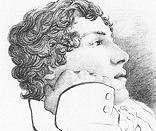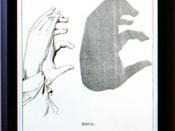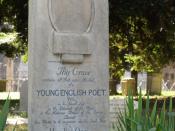John Keats uses tactile , auditory and visual imagery including a varied range of hues and colours to engage the senses of the reader. The aesthetic qualities , combined with the presence of personification and allegory make this poem memorable. He also uses augmentative and terminative phases to express the concurrent growth and death in the season of autumn. It is a lyrical evocation of autumn , with both of the phases blended together as one. The poem is divided into three stanzas , with each stanza having a certian identity and independence of its own . It creates more impact because it makes people think and question their acceptance of concurrent life and death that occurs frequently in the world , but which we rarely have time to ponder over.
The poem starts off with autumn and the sun woring in unison "To load and bless." The growth gets progressively unbearable as the apples are heavy enough to bend the trees , the gourd swells , and the hazel shells "plump" .
here he is creating visual imagery which helps make the poem memorable. Many verbs are used as present participles to show that the activity is ongoing. The flowers are getting too abundant for the bees , as "summer has o'erbrimmed their clammy cells." There seems to be an undending supply of flowers because the bees "think warm days will never cease." The ripening is at an overwhelming intensity and poses an uderlying danger of overflowing honey , and too many fruits that may cause people to believe there will always be a plentiful supple. In fact, this augmentative phase is at its maximum. This setting is memorable as it contains a plethora of visual imagery , and a variety of colour to the poem.
Stanza two is...


